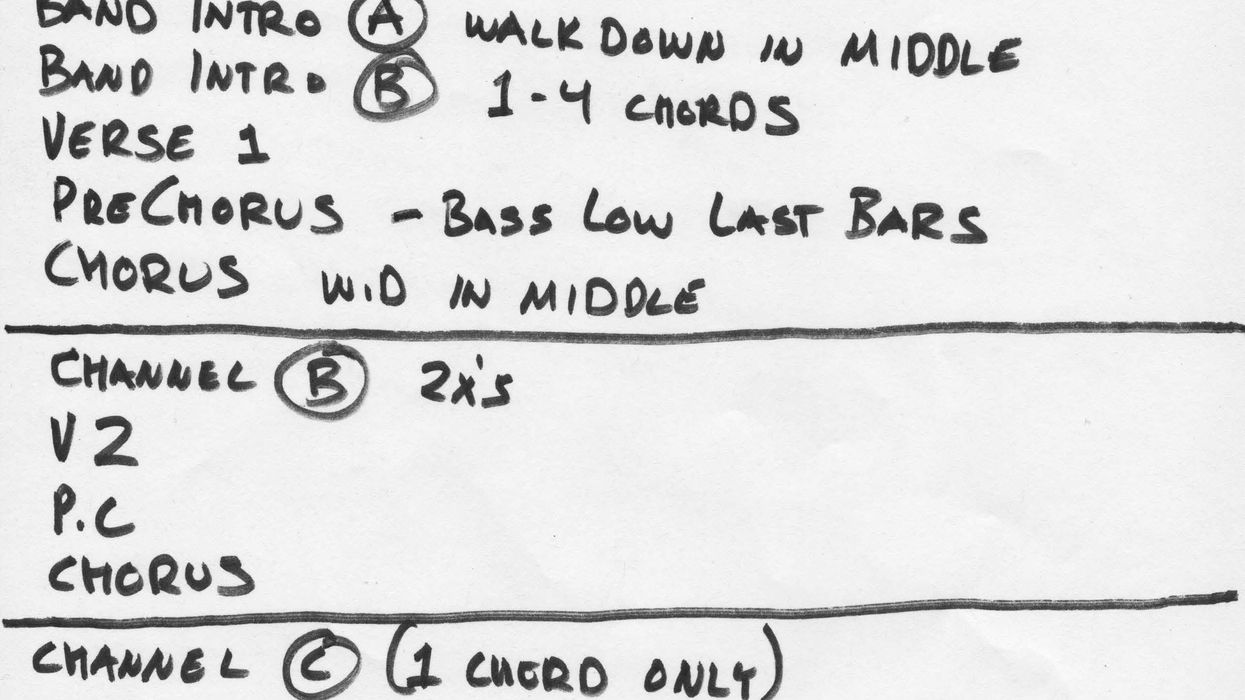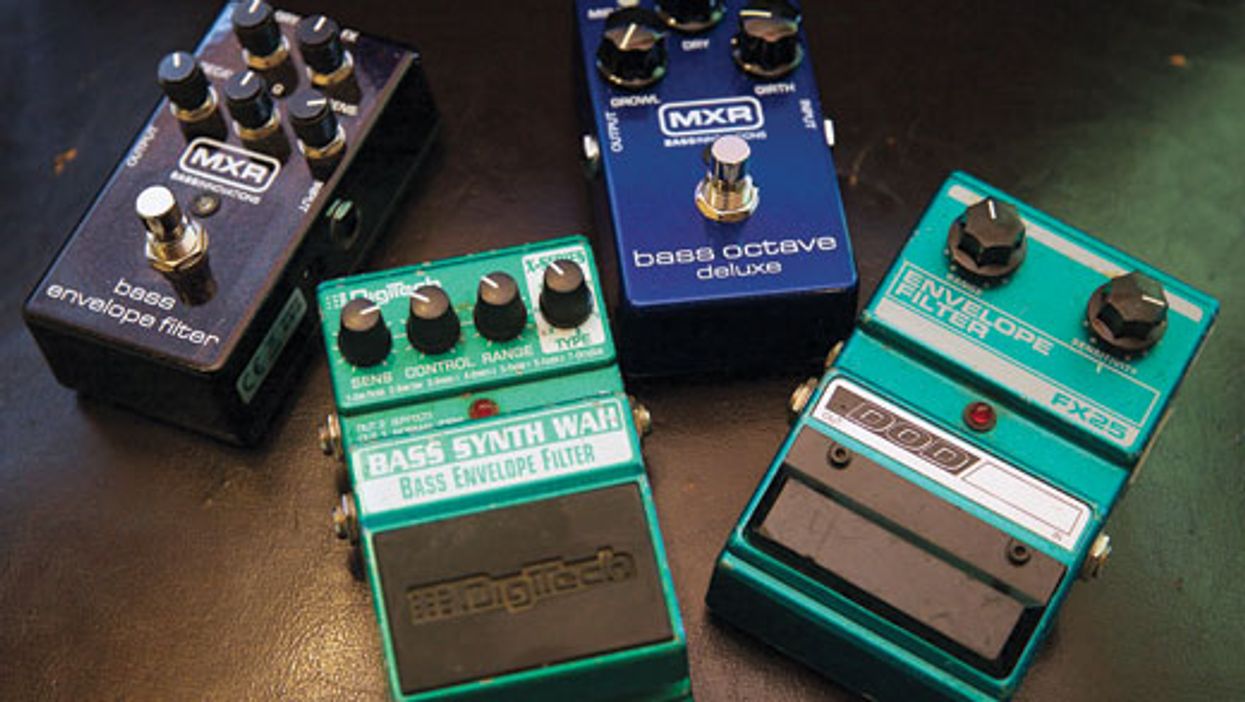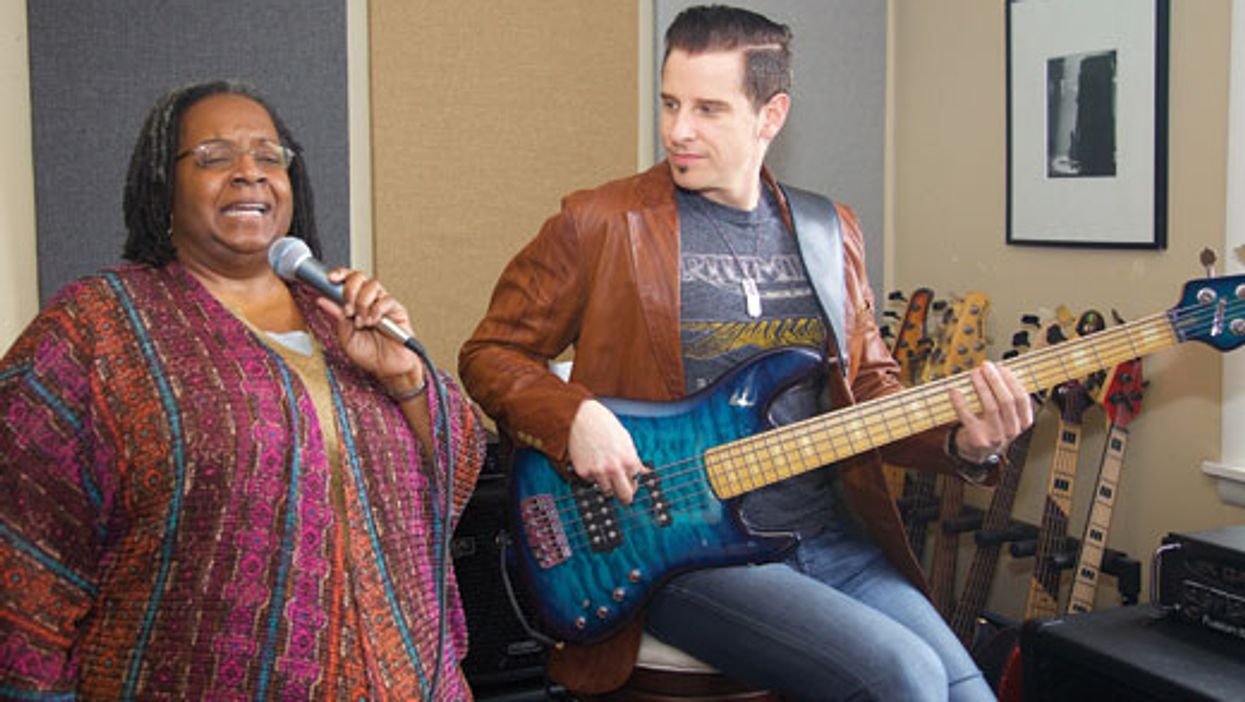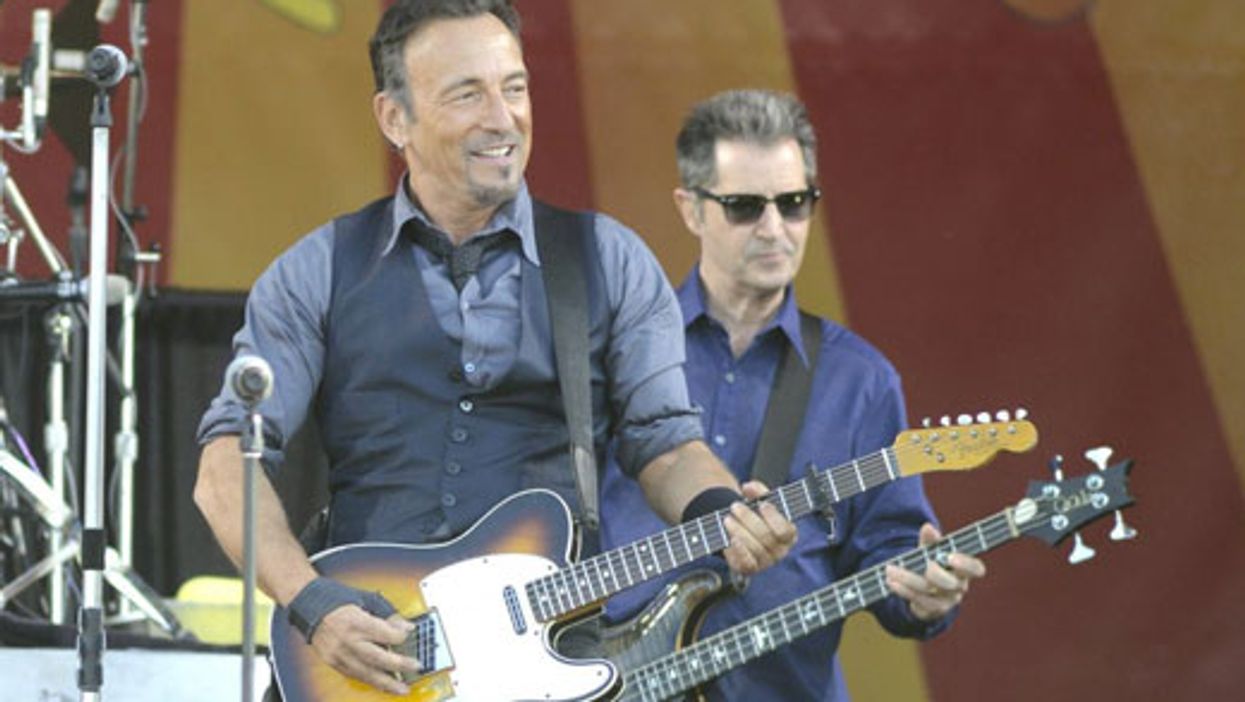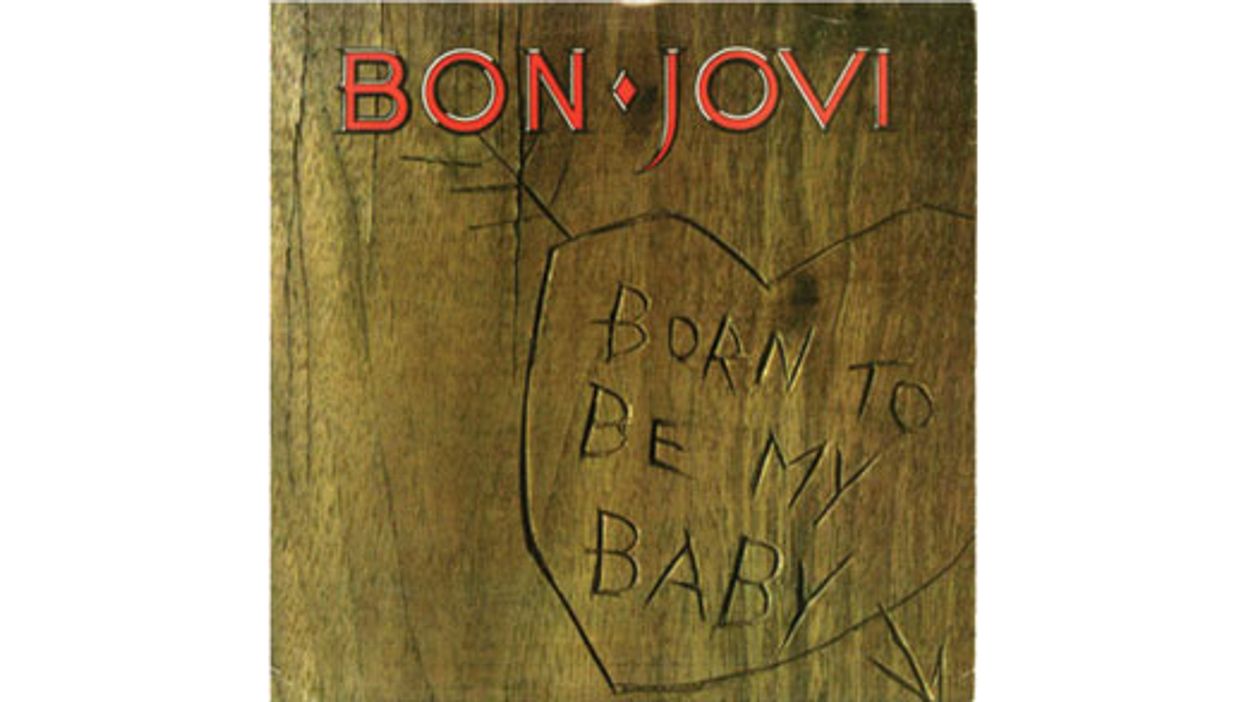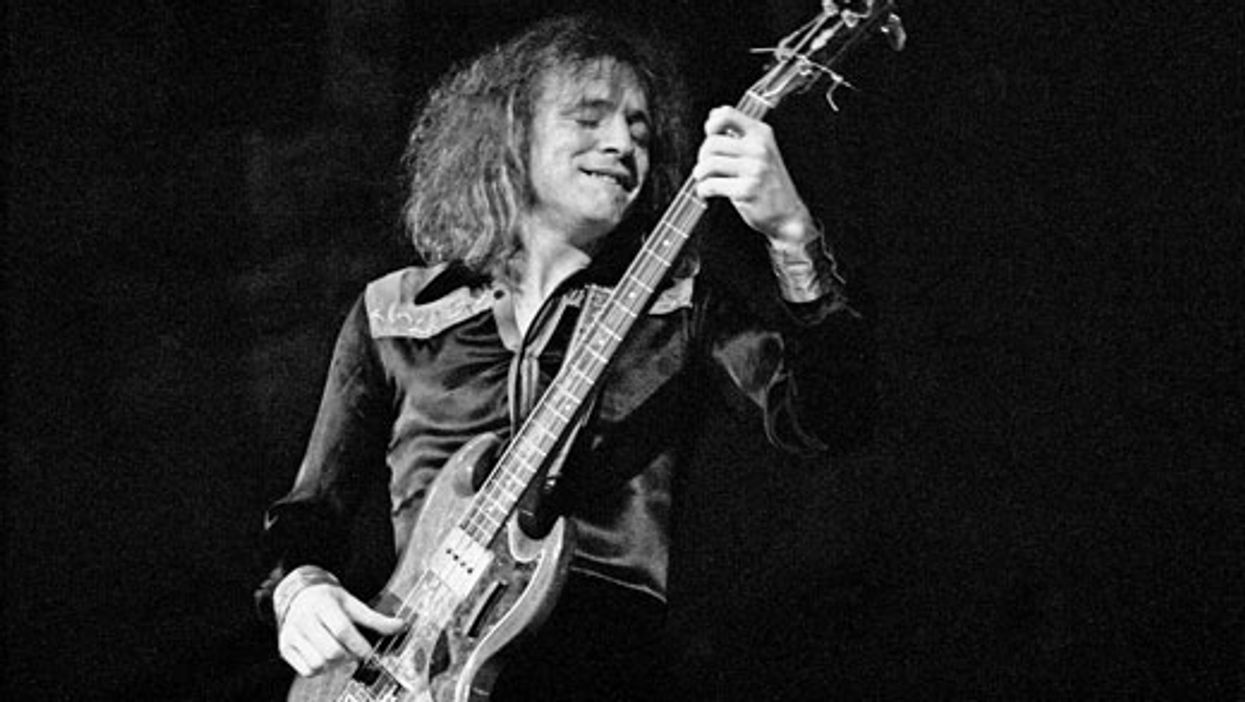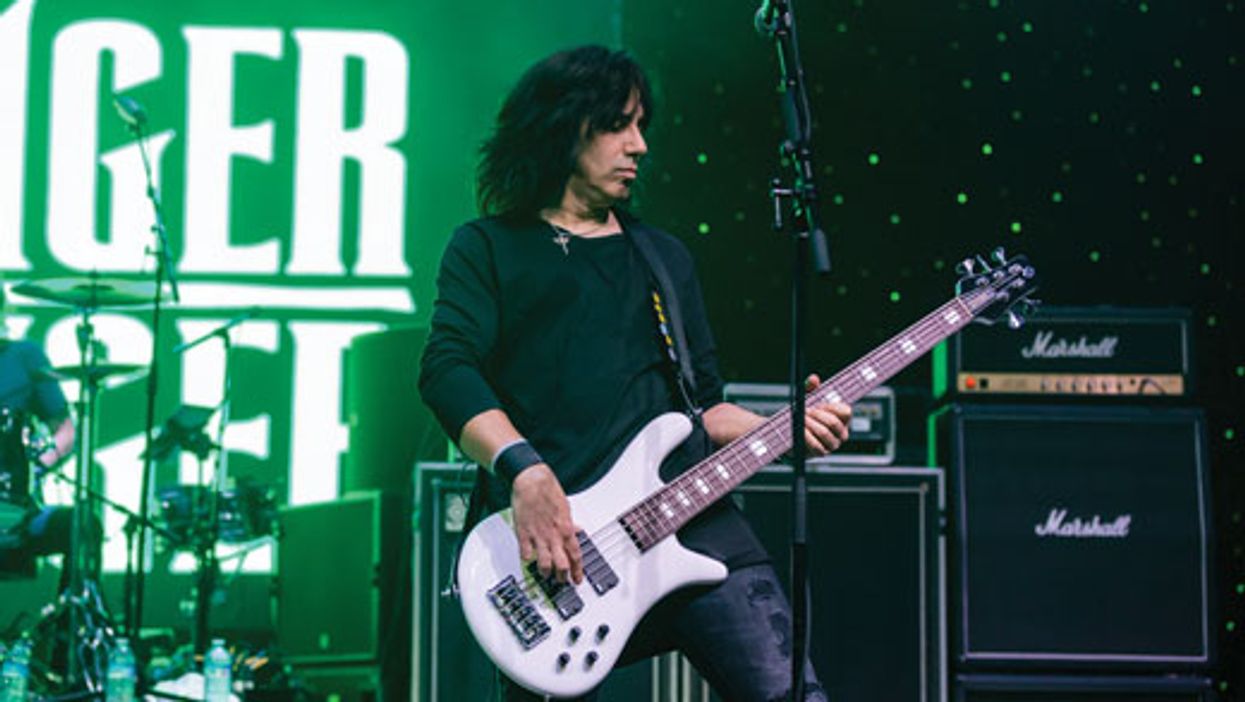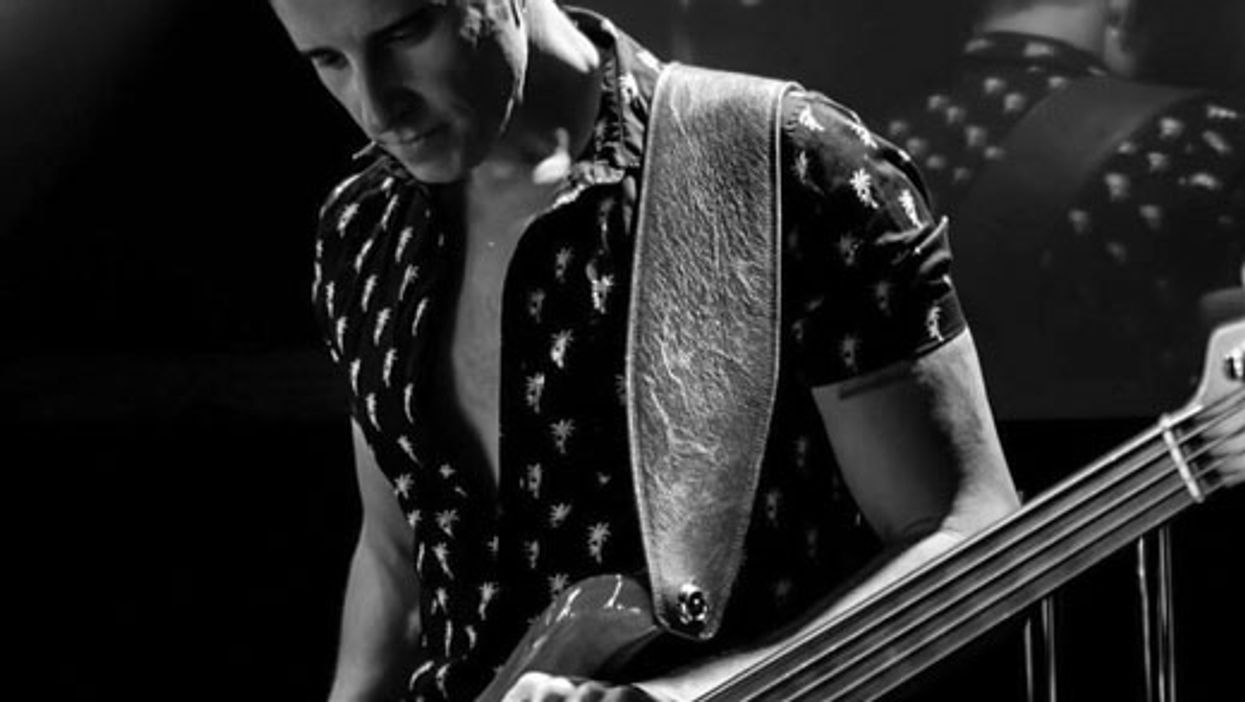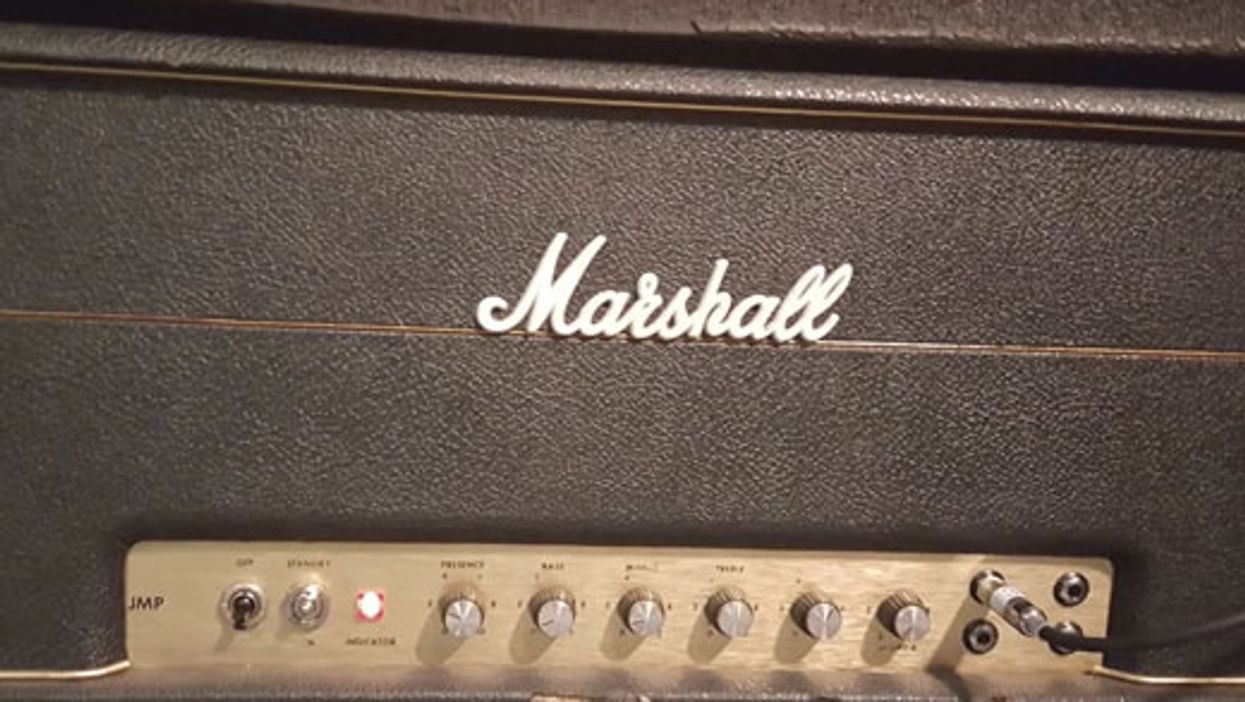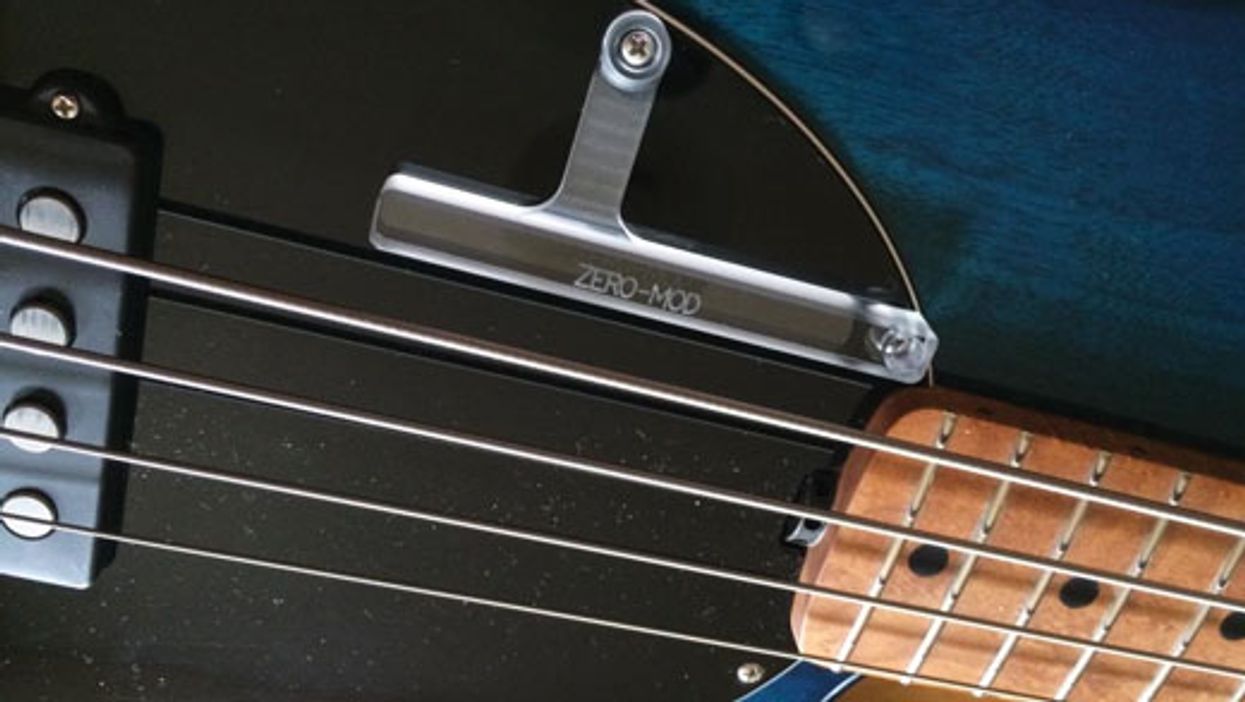When a tour hires personnel, they often do so by recommendation and don't hold auditions. When they do hold auditions, being confident you've learned the material as thoroughly as possible is absolutely crucial. I want to know that I've learned my part so well that it doesn't require me thinking when it really counts.
Many factors can derail you from repeating the perfect performance you just nailed at home after running through the tunes for the 50th time. These factors might include an amp you've never used before, playing the songs with live players instead of the recordings, stage lighting that's harsh, cameras aimed at you, lack of sleep because you were excited or nervous the night before, etc. That's why you have to know the songs better than great.
Form charts. All of us use a different learning process that suits our own brain. I find that if I write very detailed charts for a gig where I know I will eventually have to play without charts, it can be hard for me to make the transition. My method for learning songs for a gig without charts involves what I call form charts. These charts don't contain chords or any details about the bass line itself. They only contain information about the form and transitions between sections. One might think those details would be the easiest to remember, but they can sometimes be tricky for me. Since it's my job to lead the band into the next section, being exceptionally confident that I know where I'm going is of mighty importance.
A form chart is like written notes for public speaking. It's just a skeleton of what you're performing—something you can glance at while learning a song instead of something you're constantly looking at or actually reading. A form chart indicates the name of each section, and, if needed, how long every specific section is. I don't like to notate the actual amount of measures within a certain section unless I absolutely feel I have to. I like to think in riffs or patterns because I want to feel music, even in the early stages of learning.
If a song has a bass line that carries through the chord progression—which is the case in a lot of rock, pop, and soul music—I learn the bass line note for note before I write my form chart and I only notate how many times it repeats within, say, a verse. Again, I don't notate the actual pitches. That would be counterproductive for me in actually learning the song and notating pitches would effectively turn my form chart into an actual chart.
One thing at a time. When taking piano lessons as a kid, my teacher would have me start very slowly with one hand and have me work the part up to speed gradually. My teacher would then isolate the other hand, have me start that part very slowly, and work it up to speed in the same fashion. When combining the parts, my teacher would have me start back at a painstakingly slow speed even though I had mastered the parts separately at a quick tempo.
This was a great lesson in how to approach playing bass and singing at the same time. I'm not a great harmony singer by any stretch, but my ability to confidently sing basic harmonies adds tremendous value when auditioning for a new gig. If you aren't singing in your current band, I'd still encourage you to try singing in the privacy of your home to develop your skills. Tip: Do not try singing until the bass part is second nature. Once it is, learn the vocal part and figure out the details, inflections, and emotion without playing bass. I can't emphasize this enough. (Thinking like a vocalist when playing bass is a tremendous weapon to have in your conceptual musical-thinking arsenal, but that is another column altogether.)
Stand up. I'm usually sitting down for long periods of time when learning all the details and intricacies of the bass and vocal parts. Once I get to the point where I am comfortable with both parts, I then stand up and repeat the performance many times. Doing this changes where the bass hangs on the body (unless you wear your bass very high) and it definitely changes the way you sing since your abdominal support is much better standing up. And this way you're practicing the way you will perform at the audition or the gig.
There are few things more thrilling than a high-level audition and this is my basic process for prepping. Everyone expects the bassist to keep his or her cool, and if you are well prepared, you will.


